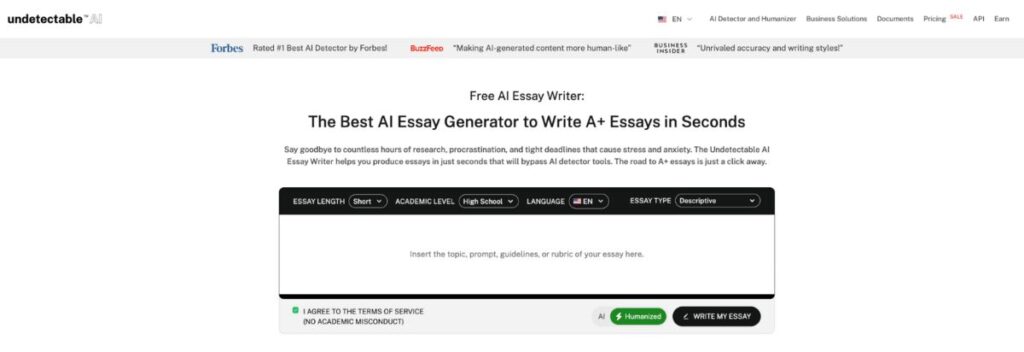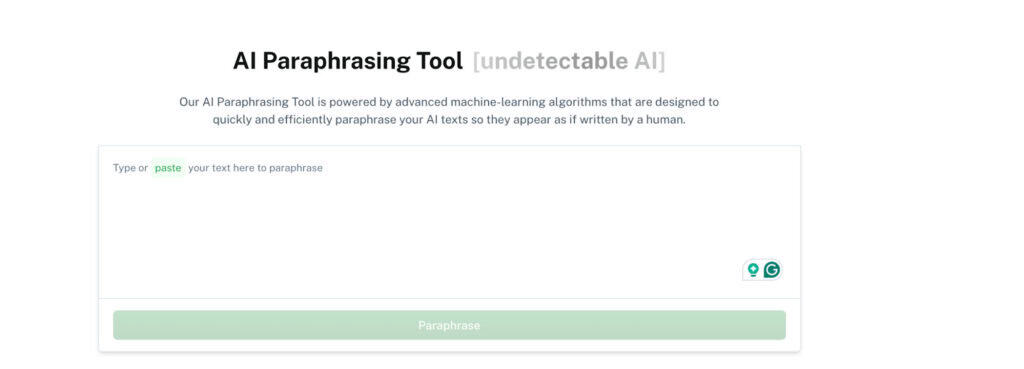Have you ever thought of how odd humans would look without a spine?
Without a thesis statement, essays and papers would look and feel as odd as humans with no spine. A thesis statement is the backbone element of every academic paper.
They guide readers toward clarity across various fields, whether in the university or workplace setting.
A thesis statement summarizes your argument and enables you to control your thesis writing from the very beginning to the end.
Nevertheless, one nagging question that most people have in their mind is: “What is the appropriate length for a thesis statement?”
The necessary length of a thesis statement differs from situation to situation. This guide presents more context on writing a thesis statement, the optimal lengths for different statements, and the key factors that determine them. Let’s get into it together.
What Is a Thesis Statement?
In essays or speeches, a thesis statement summarizes the idea. Typically found at the end of the introduction, it narrows down the topic and guides the reader to the argument.
An effective thesis statement is:
- Clear: It states the main idea or argument.
- Specific: It avoids vague language or overly broad claims.
- Focused: It sets up the reader for the supporting points or evidence to follow.
- Arguable: It takes a position that encourages debate or opposing views.
For instance:


Never Worry About AI Detecting Your Texts Again. Undetectable AI Can Help You:
- Make your AI assisted writing appear human-like.
- Bypass all major AI detection tools with just one click.
- Use AI safely and confidently in school and work.
A weak thesis could be: “Climate change is bad for the planet.”
This statement is not detailed enough; it does not explain the consequences of climate change or to what extent it affects the environment and society.
On the other hand, a strong thesis statement could be: “The rapid advance of climate change hinders biodiversity, disrupts ecosystems, and speeds up sea level rise—all at a pace that demands immediate global action”.
This version is robust, and detailed, and offers concrete examples of the impacts related to climate change.
It talks about biodiversity, ecosystems, and sea-level rise, and begs consideration to action.
How Long Should a Thesis Statement Be?

The length of a thesis statement depends on the type and size of the thesis.
A short thesis statement typically looks like this: “Social media affects communication patterns globally.”
However, longer versions look more like this: “Social media has reshaped global communication by enabling instant information sharing.”
While longer statements may provide more clarity, shorter attention spans in this social media age will be a challenge.
In any case, most thesis statements will be one or two sentences long at most.
The goal is to get your argument across as clearly as you can, without boring your reader with more information than needed.
General Guidelines for Thesis Statement Length
The rules that direct thesis statement lengths vary for different academic levels. They are as follows:
- High School Essays (5-Paragraph Format): 1 sentence, 15-25 words.
Example: “While social media revolutionized communication, it also made problems like cyberbullying and the spreading of misinformation rampant.”
- College Essays and Research Papers: 1 sentence, 15-25 words.
Example: “While social media revolutionized communication, it also made problems like cyberbullying and the spreading of misinformation rampant.”
- Longer Research Papers and Dissertations: 2-3 sentences, 30-75 words.
Example: “This study examines how remote work affects employee performance coupled with job satisfaction while exploring work-life equilibrium and communication systems and supervisory backing for hybrid workforce solutions.”
Factors Influencing Thesis Statement Length
A variety of factors are taken into consideration in determining the length of your thesis statement:
Complexity of the Topic
Straightforward topics, such as “The benefits of recycling”, may be complete with a simple sentence.
More sophisticated topics, such as “The ethical ramifications of AI in health,” will probably necessitate longer thesis statements.
Type of Essay
The essay type can weigh greatly on the length of the thesis statement. So writers must firmly understand the different essay types.
Argumentative Essays: These essays aim to convince readers by giving a clear stance on the issue in discussion and then proving it through firm evidence. The thesis statement is supposed to outline the main argument and the key points to be addressed.
For example, a thesis statement such as, “Renewable energy adoption reduces greenhouse gas emissions and mitigates climate change” introduces both the stance—the necessity of renewable energy—and the justification of that stance, that is, the environmental benefits.
Analytical Papers: These are papers that break down any subject or text to explain an underlying meaning or component. The thesis statement should be a summary of the central point and its importance.
For example, “Shakespeare’s use of soliloquies in Hamlet highlights the protagonist’s internal conflict and moral ambiguity,” identifies the focus, which is the soliloquies, and their significance (internal conflict).
Expository Essays: Expository essays are designed to explain or tell; they require a thesis statement that reveals the subject and enumerates the main issues to be addressed.
For example, the statement, “Recycling helps the environment by saving natural resources, reducing landfill waste, and decreasing the amount of pollution” clearly points to the subject of recycling, and its major benefits.
Length of the Paper
Short essays typically call for concise thesis statements. Longer papers or dissertations benefit from detailed thesis statements to guide the reader.
Disciplinary Norms
The humanities typically adopt descriptive and nuanced thesis statements. STEM papers may prefer a direct and exact thesis.
In unique cases where a paper combines insights from both the humanities and STEM, such a case may require a balance between a descriptive and concise thesis statement, leading to a slightly longer statement that accommodates both disciplinary expectations.
How to Craft a Concise Thesis Statement
An effective thesis statement is meant to strike an effective balance between brevity and clarity. Here’s how to practically do it:
Start With a Clear Argument or Purpose
Identify the central question that your paper answers and supply that answer in one direct sentence.
For example, Suppose your essay is about renewable energy; you can start with the question, “How does renewable energy affect climate change?”
After pondering on this for a while, you may come up with a thesis like, “The use of renewable energy means fighting against climate change because it reduces the emission of greenhouse gases, contributing to sustainable development.”
Avoid Unnecessary Words
Eliminate filler words and redundant phrases. Focus on delivering your point succinctly. E.g Instead of saying, “It should be noted that recycling reduces waste,” you should say, “Recycling reduces waste.
Combine Simplicity With Precision
Use simple language, but have your thesis state the crux of your argument.
For instance, Instead of saying, “Many people believe renewable energy is good for the environment”, say, “Renewable energy reduces carbon emissions and mitigates climate change.”
Check Word Count
Ensure your thesis statement fits the recommended word count for your essay type. Use tools like AI word counters to refine the length and ensure precision.
Examples of Thesis Statement Lengths
Knowing what type of essay one is writing helps in the formulation of an appropriate thesis statement—whether long or short—so that one’s argument can be woven into the essay in a way that is largely expected.
There are different ways of writing thesis statements for argumentative, expository, and analytical essays. Some examples of each are discussed below.
Example 1: Argumentative Paper
Let’s examine one weak example and a proper example below:
- Weak thesis statement: Every aspect of modern communication derives both beneficial and detrimental effects from its use of social media.
- Detailed thesis statement: The global connectivity provided by social media coexists with two major disadvantages that people need to study deeply to overcome misinformation outbreaks and reduced attention spans.
Example 2: Expository Paper
Let’s examine one weak example and a proper example below:
- Weak thesis statement: “Recycling helps the environment.”
- Detailed thesis statement: Incorporating recycling reduces the number of natural resources we consume and decreases the waste sent to landfills.
This protects the environment, making it an essential technique for sustainable living.
Example 3: Analytical Paper
Let’s examine one weak example and a proper example below:
- Weak thesis statement: “Shakespeare’s Hamlet delves into revenge and mortality.
- Detailed thesis statement: Revenge actions in Hamlet by Shakespeare deliver two tragic outcomes: deadly moral destruction alongside existential hopelessness that represents human failure modes.
Mistakes to Avoid With Thesis Statement Length
The following mistakes are all too common and should be avoided.
Being Too Vague
The following is an example of a vague statement and its improved version.
- Poor thesis statement: “Pollution is a problem.”
- Improved thesis statement: Insufficient environmental regulations need immediate implementation because industrial waste combined with vehicle emissions creates severe health risks through air pollution.
Making It Too Long
The following are different examples of long statements.
- Weak thesis statement: Communication through social media has generated multiple changes that support worldwide interconnection and content sharing yet it introduces issues that include false information spread and user attention deficiencies along with online bullying.
- Improved thesis statement: While social media facilitates improved worldwide communication it has given rise to the problems of misinformation and cyberbullying.
Failing to Take a Stand
The following are examples of statements with a clear-cut stand and without a clear-cut stand.
- Weak thesis statement: The next segment analyzes climate change elements.
- Improved thesis statement: The implementation of renewable energy along with changes to international policy requires immediate action to fight climate change.
Tools to Help Refine Thesis Statements
The following tools will prove essential in your thesis writing journey:
AI Essay Writer
AI essay writers enable users to create both topic-oriented drafts and fresh ideas following the input of their selected concept.
Understanding speculative material is just one of many skills that Undetectable AI Essay Writer possesses.

Our tool allows users to create better-organized academic thesis statements while generating content with human-sounding writing that meets scholarly standards.
AI Paraphrasing tool
An AI Paraphrasing tool is ideal for fine-tuning a thesis statement for conciseness and clarity with the least deviation from its intention.

Word Counter
Writing an effective thesis statement needs precision.
Our Word Counter tool at AI automatically detects the number of words, characters, and sentences, when you input your text into the word counter text field.

This will ensure that your statement adheres to the recommended word count.
We have other products that can help with your essay writing. Our AI stealth writer, AI essay rewriter, and AI plagiarism checker can help save valuable time when writing your thesis.
FAQs About Thesis Statement Length
Can a Thesis Statement Be Longer Than Two Sentences?
Yes, especially when the topics are more complicated and the paper is longer. Make sure that it is clear and specific.
Is There a Minimum Word Count for a Thesis Statement?
Although there is no real minimum, most strong thesis statements fall in the range of 20-50 words.
How Do You Know If Your Thesis Statement Is Too Long?
Whenever your thesis statement feels cluttered or introduces multiple ideas, revise it for brevity and clarity.
Does Thesis Statement Length Differ by Discipline?
Yes, humanities allow for more descriptive theses, while other sciences and stem-related papers prefer short and to-the-point statements.
Conclusion
The academic spine of all scholarly papers is in a properly structured thesis statement.
Before building your thesis statement, remember that the essay specification determines your thesis statement length.
So, double-check it before writing so that you can create a thesis statement that serves both your writing direction and engages your readers.
For more valuable essay writing tips, check out our blog and use our tools to elevate your academic writing skills.
